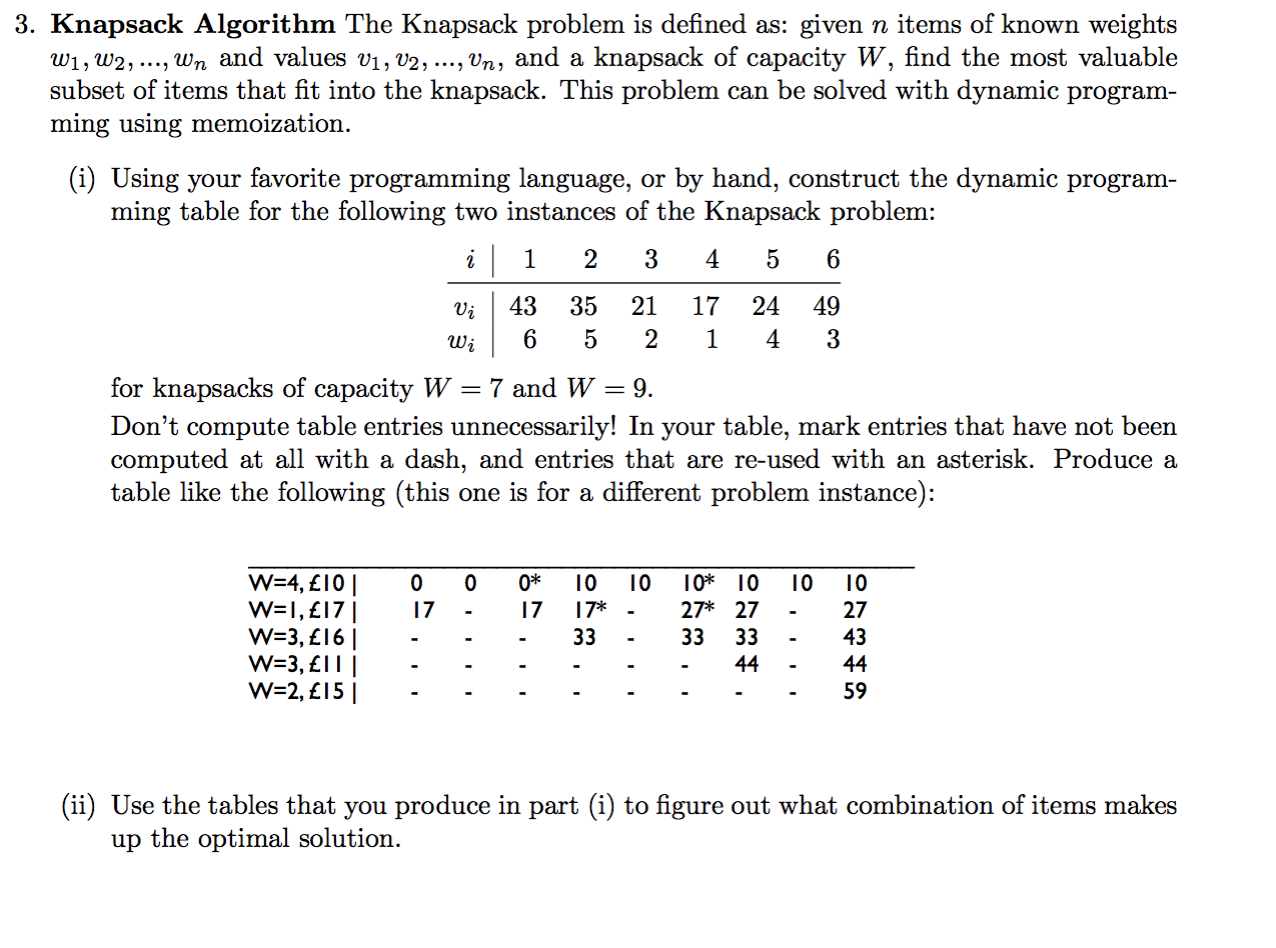
The rows represent the profits and weights of items. In the above matrix, columns represent the weight, i.e., 8. How this problem can be solved by using the Dynamic programming approach? In dynamic programming approach, the complicated problem is divided into sub-problems, then we find the solution of a sub-problem and the solution of the sub-problem will be used to find the solution of a complex problem. Once all the combinations are made, we have to select the combination that provides the maximum profit.Īnother approach to solve the problem is dynamic programming approach. There are 16 possible combinations that can be made by using the above problem. Since there are 4 items so possible combinations will be:Ģ 4 = 16 So. 1 denotes that the item is completely picked and 0 means that no item is picked.

The above problem can be solved by using the following method:


Example of 0/1 knapsack problem.Ĭonsider the problem having weights and profits are: The fractional knapsack problem is solved by the Greedy approach. For example, we have an item of 3 kg then we can pick the item of 2 kg and leave the item of 1 kg. The fractional knapsack problem means that we can divide the item. The 0/1 knapsack problem is solved by the dynamic programming. This is a 0/1 knapsack problem in which either we pick the item completely or we will pick that item. If we pick the 2kg item then we cannot pick 1kg item from the 2kg item (item is not divisible) we have to pick the 2kg item completely. For example, we have two items having weights 2kg and 3kg, respectively. The 0/1 knapsack problem means that the items are either completely or no items are filled in a knapsack. First, we will learn about the 0/1 knapsack problem. We will discuss both the problems one by one. There are two types of knapsack problems: We have to select the items in such a way that the sum of the weight of items should be either smaller than or equal to the weight of the container, and the profit should be maximum. We have to put some items in the knapsack in such a way total value produces a maximum profit.įor example, the weight of the container is 20 kg. Suppose we have given some items which have some weights or profits. Moreover, our analysis provides a novel approach to onlineĪlgorithm design based on an instance-dependent primal-dual analysis thatĬonnects the identification of worst-case instances to the design ofĪlgorithms.Here knapsack is like a container or a bag. We introduce a new algorithm that achieves aĬompetitive ratio within an additive factor of one of the best achievableĬompetitive ratios for the general problem and matches or improves upon theīest-known competitive ratio for special cases in the knapsack and one-way Separately, and additionally finds application to the real-time control ofĮlectric vehicle (EV) charging. Problem and of the one-way trading problem that have previously been treated This problem generalizes variations of the knapsack Problem with multiple knapsacks, heterogeneous constraints on which items canīe assigned to which knapsack, and rate-limiting constraints on the assignment
KNAPSACK PROBLEM PDF
Download a PDF of the paper titled Competitive Algorithms for the Online Multiple Knapsack Problem with Application to Electric Vehicle Charging, by Bo Sun and 5 other authors Download PDF Abstract: We introduce and study a general version of the fractional online knapsack


 0 kommentar(er)
0 kommentar(er)
